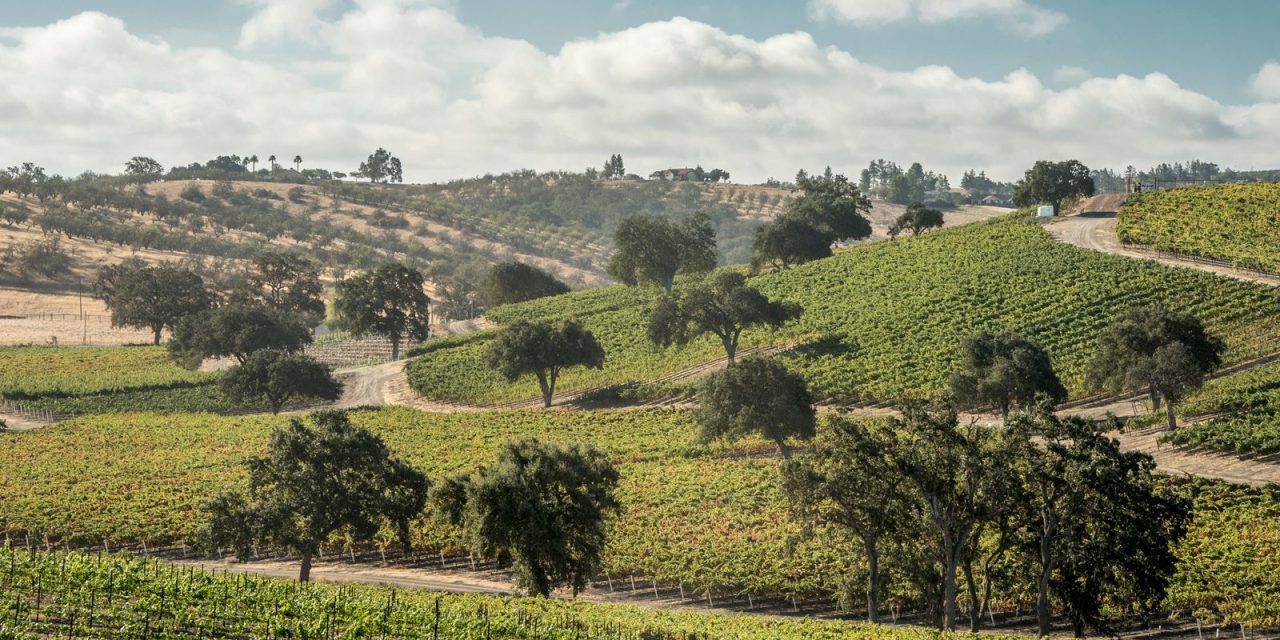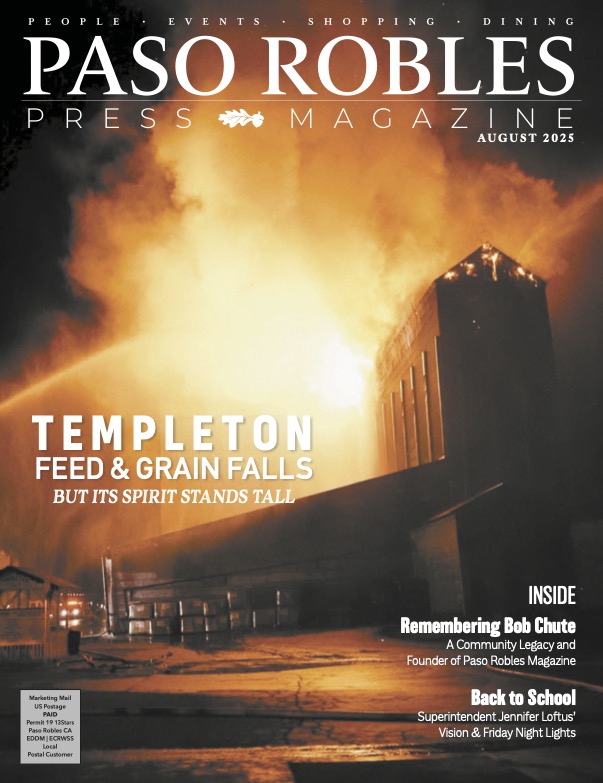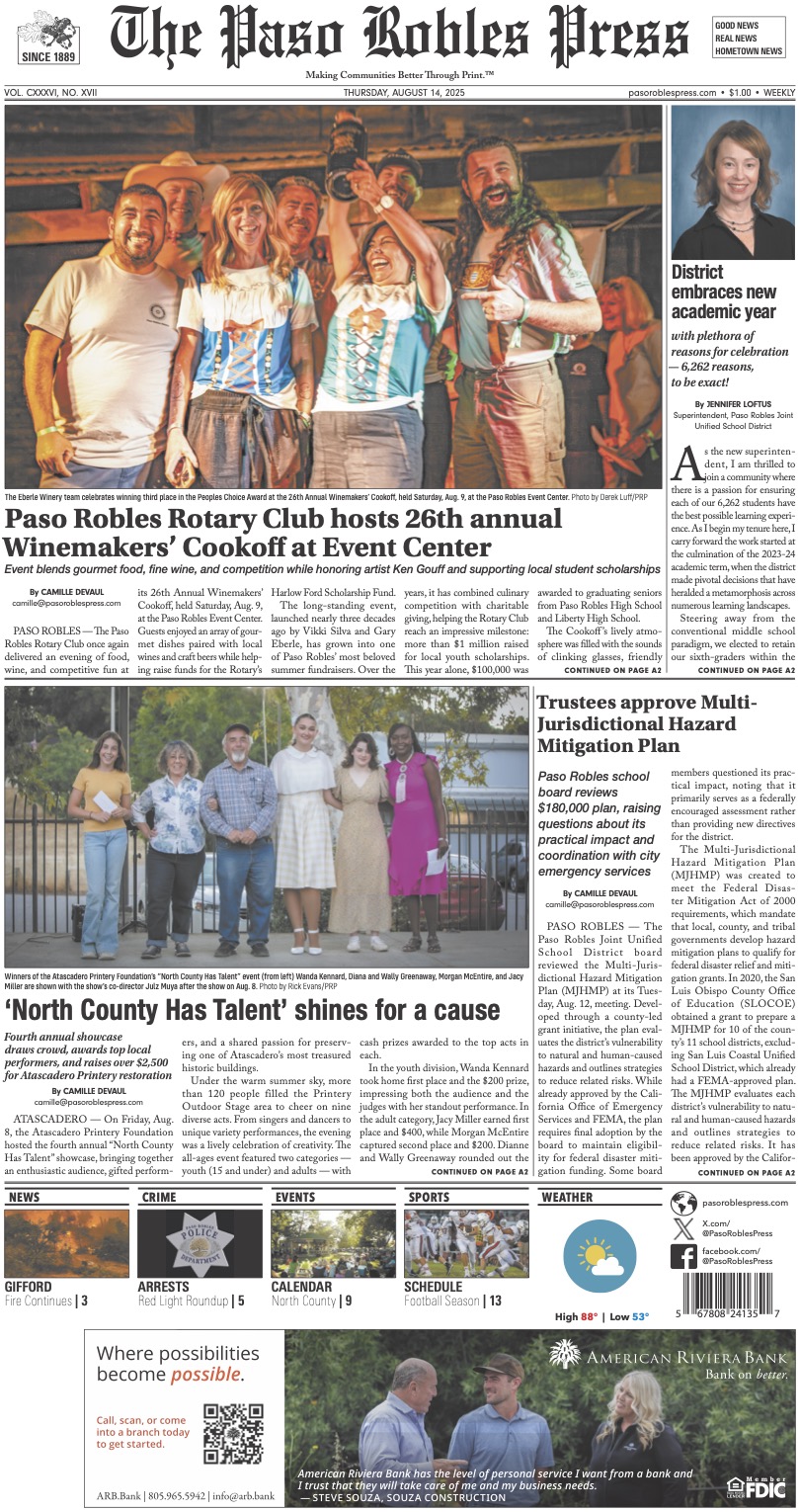New study shows local wineries and tourism support nearly 9,000 jobs, generate $328 million in taxes, and attract 2.5 million visitors annually to the region
PASO ROBLES — The wine industry in the Paso Robles American Viticultural Area (AVA) and Paso Robles wine tourism generate $2.8 billion in economic impact, according to a comprehensive study prepared by Beacon Economics and released by the Paso Robles Wine Country Alliance. The new report, titled “Paso Robles Wine Industry Economic, Fiscal, and Social Impact Study” reveals the sector’s substantial contributions to the region’s economy, job market, and public services. It highlights a dramatic increase in economic output and job creation, cementing the wine industry’s role as a vital economic engine for this California Central Coast region.
There are several key takeaways from the study:
- Total Economic Impact: The Paso Robles wine industry generates an astounding $2.8 billion in total statewide economic output; $2.6 billion within San Luis Obispo County.
- Value Added to Economy: Winemaking adds $2.32 to every $1 of vineyard activity in Paso Robles or an impressive $1.4 billion.
- Job Creation: The wine industry directly and indirectly supports nearly 9,000 jobs in the region, including 2,900 jobs in wineries and 1,700 jobs in vineyards. That equates to 1 in 5 jobs in the AVA.
- Tax Revenue: The Paso Robles wine industry contributes $327.8 million in tax revenue.
- Tourists: Paso Robles and the Paso Robles AVA host 2.5 million visitors annually
The study details that the Paso Robles AVA, founded in 1983 with just 17 wineries under 5,000 acres of vines, has blossomed into a thriving industry with over 250 wineries and 40,000 acres under vine. The value of the County’s grapes has seen a remarkable increase from $9.8 million in 1985 to $323 million in 2023. This growth propels the region’s economic output and cultural growth.
“These findings underscore the immense value the Paso Robles wine industry brings to our community,” said Joel Peterson, executive director of the Paso Robles Wine Country Alliance, “From fostering robust economic growth and creating thousands of jobs to generating vital tax revenue for public services, the impact of our wineries and vineyards extends far beyond a glass of wine. We are proud to be a cornerstone of the regional economy and a significant contributor to the quality of life in Paso Robles.”
According to the Research Manager of the study, Stafford Nichols, “The wine industry is a significant employer in the Paso Robles AVA. Every vineyard and winemaking job in the AVA creates an additional job in other sectors of the regional economy. These include restaurants, retail, gas stations, real estate, insurance, and other businesses.”
The study highlights the vital role of tourism in Paso Robles, which is directly aligned with the growth of the wine industry, attracting 2.5 million visitors annually. Hotels and restaurants have seen a 115% growth over the last 15 years. Hospitality and tourism account for 4,300 jobs in the region, generating $180 million in labor income. Furthermore, this vibrant sector adds $342.8 million in value to the local economy, highlighting how visitors to our wineries and tasting rooms fuel a wide array of businesses and contribute significantly to our community’s prosperity.
“The tourism ecosystem is strong thanks to the robust wine industry,” said Stacie Jacob, President and CEO of Travel Paso, the region’s destination marketing organization. “The destination offers guests many options for a multi-day itinerary from wineries to accommodations to MICHELIN rated dining to unique shopping to immersive art experiences. Tourism matters in Paso Robles. It supports jobs, our local economy and our businesses.”
In addition to its contributions to job creation and tourism, the Paso Robles AVA and San Luis Obispo County wine industry generated $540 million in labor income. Labor income represents all payments for work, including wages, salaries, and benefits. Workers spend their income in the local economy, further stimulating business activity. Of this, $105 million was generated from vineyards and $255 million from wineries.
These findings complement a recent City of Paso Robles Tourism Impact Study, which shows that one out of every five jobs in the city are supported by tourism. Furthermore, the wine industry study reveals a substantial indirect economic impact on government services through increased tax revenue from visitors. In 2023, 37% of the City of Paso Robles’ General Fund was generated from wine-related tourism. This funding fuels the hiring of essential city staff such as emergency service personnel and public works employees, which has resulted in improved social outcomes and enhanced quality of life for residents.
Beyond its significant economic contributions, the growth of the Paso Robles wine industry has enriched the local community, fostering a vibrant cultural and social landscape, including key attractions like music venues, immersive art installations, and a vibrant downtown. The region’s culinary scene has also evolved dramatically from sparse rural dining in the 1970s to international recognition, now boasting San Luis Obispo County’s only two MICHELIN Star restaurants, a testament to the symbiotic relationship between wine and food. Furthermore, the Paso Robles wine community demonstrates deep social responsibility through philanthropic endeavors, exemplified by Must! Charities, which has invested over $8 million into the region. The industry also champions sustainability, with the Paso Robles AVA leading in practices like dry farming, regenerative agriculture, and eco-friendly certifications, positioning the region as an innovative leader for the broader wine-growing world.
Funding for the Paso Robles Wine Industry Economic, Fiscal, and Social Impact Study was made possible by a grant/cooperative agreement from the U.S. Department of Agriculture (USDA) Agricultural Marketing Service. Its contents are solely the responsibility of the authors and do not necessarily represent the official views of the USDA. The study was commissioned by the Paso Robles Wine Country Alliance and research was conducted and completed by Los Angeles-based Beacon Economics.
The full 65-page study can be found at pasowine.com/paso-robles/economic-impact
Feature Image: Photo Courtesy of Paso Robles Wine Country Alliance














